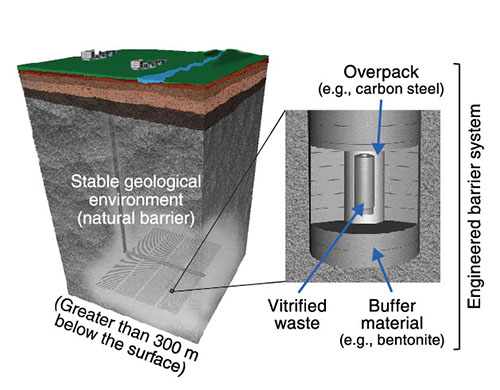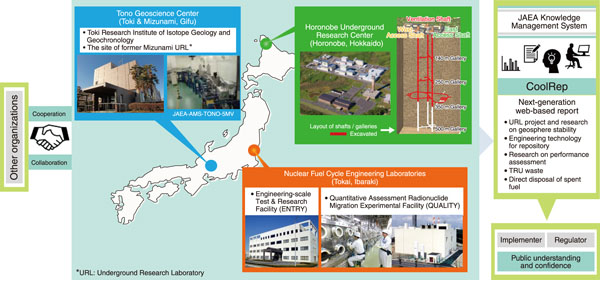
Fig.1 Schematic view of the basic concept of the geological disposal of high-level radioactive waste (HLW)

Fig.2 Structure of the JAEA R&D activities
Geological disposal is internationally recognized as the most practical method currently available for the long-term isolation of high-level radioactive waste (HLW), which is produced during the generation of nuclear power, from human environments. This critical issue must be approached sensibly by the present generation, and it will remain crucial regardless of any revision of the national nuclear energy policy.
In Japan, the spent fuel discharged from a nuclear reactor is reprocessed to extract reusable uranium and plutonium for power generation. The liquid separated from the spent fuel during chemical reprocessing is vitrified into a stable glass form. In accordance with the Japanese disposal policy, the vitrified waste is then encapsulated in a thick steel overpack, which is surrounded by highly compacted bentonite, and emplaced in a stable geological environment at a depth greater than 300 m below the surface (Fig.1).
Research and development (R&D) in relevant fields such as geoscience, repository engineering, and safety assessments of the disposal system are ongoing, as summarized in Fig.2. These efforts are vital for improving their technical basis and are reflected in the implementation and regulatory activities.
The Horonobe Underground Research Center for sedimentary rock conducts R&D, including study on near-field system performance in geological environments (Topics 9-1 and 9-2). Moreover, the Horonobe International Project (HIP) is currently underway with the administrative support of the OECD/NEA (Organisation for Economic Co-operation and Development Nuclear Energy Agency). The HIP aims to advance R&D by using underground research facilities and to maximize the R&D outcomes by collaborating with domestic and international institutions as a hub in the Asian region.
At the Tono Geoscience Center, the Toki Research Institute of Isotope Geology and Geochronology is engaged in research on geosphere stability (Topics 9-3 and 9-4), while at the Mizunami Underground Research Laboratory, environmental surveillance is currently ongoing to confirm the groundwater condition subsequent to the backfill of the underground facilities and the removal of the surface facilities, which were completed in January 2022.
To further expand the knowledge on geological disposal, extensive studies are being conducted to assess the behavior of engineered barrier system and the key processes constraining the release and migration of radionuclides (Topics 9-5 and 9-6). These studies use data on the long-term stability of geological environments and data on geological environments obtained through geoscientific research at underground research laboratories.
Results of the R&D activities during the JAEA’s 3rd Medium-/Long-Term Objectives period (FY2015-FY2021) have been summarized as a next-generation web-based report (CoolRep), which is available on the public website of the JAEA (CoolRep: https://kms1.jaea.go.jp/CoolRep/index.html, Japanese site). Furthermore, the “Debriefing Session regarding R&D on Geological Disposal Technology-Synthesis of R&D outcome during 3rd Medium-/Long-Term Objectives period (CoolRepR4)” was held on September 30, 2022. In this session, R&D outcomes of the JAEA’s 3rd Medium-/Long-Term Objectives period were presented, with primary focus on the contents of CoolRepR4 (Debriefing Session regarding R&D on Geological Disposal Technology: https://www.jaea.go.jp/04/tisou/houkokukai/houkokukai_r04.html, Japanese site).